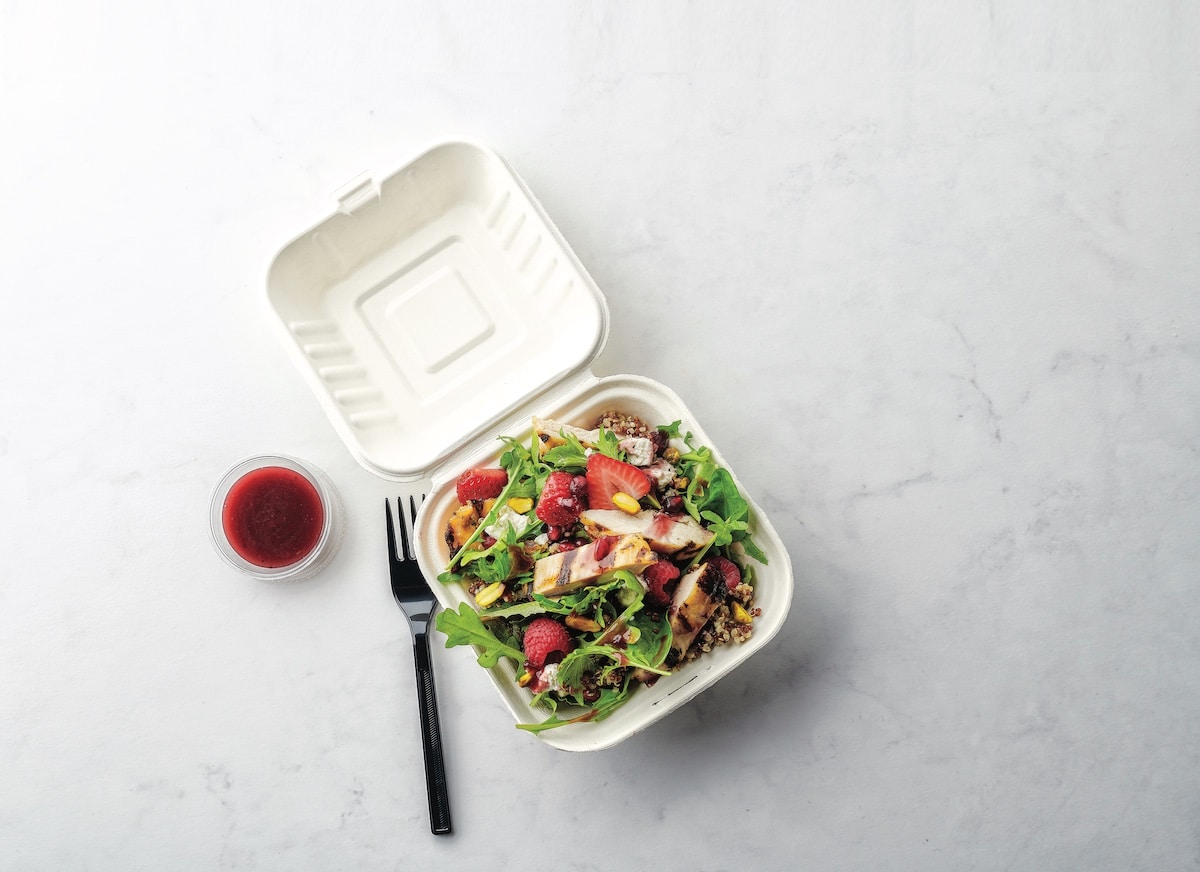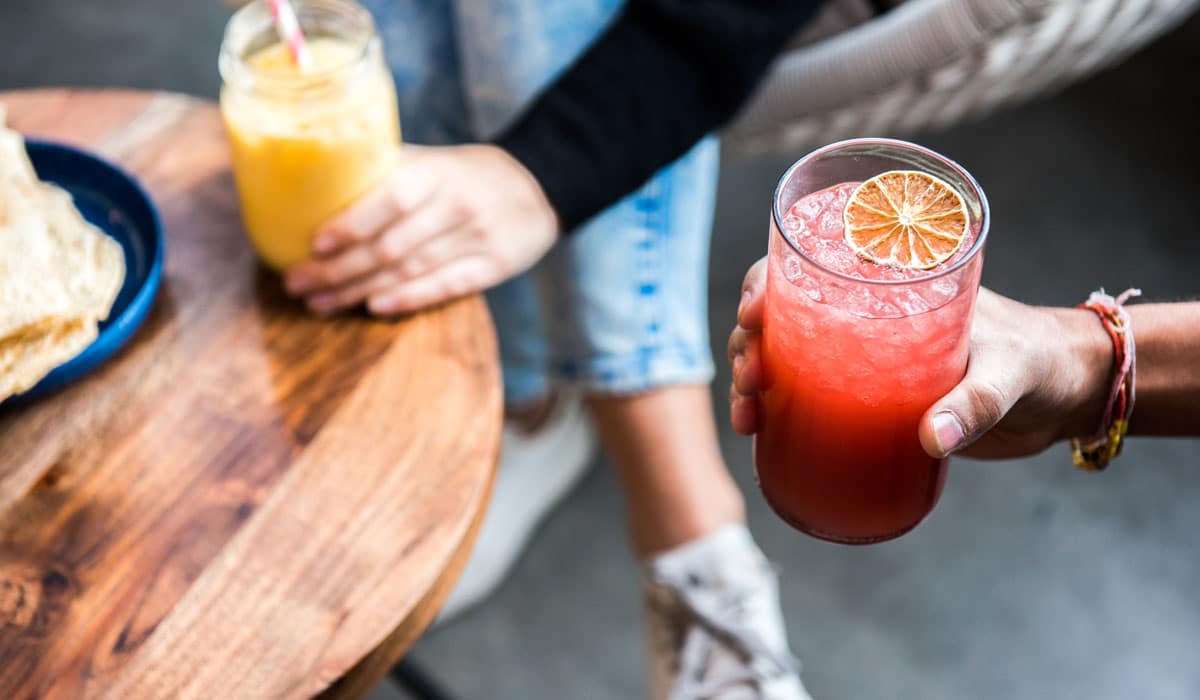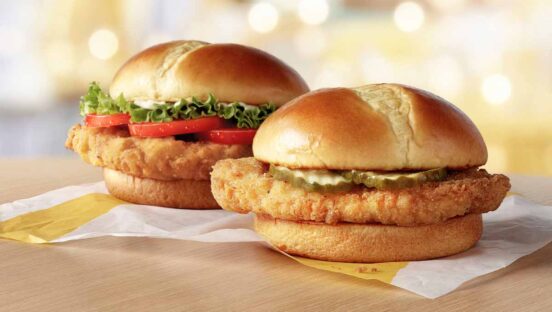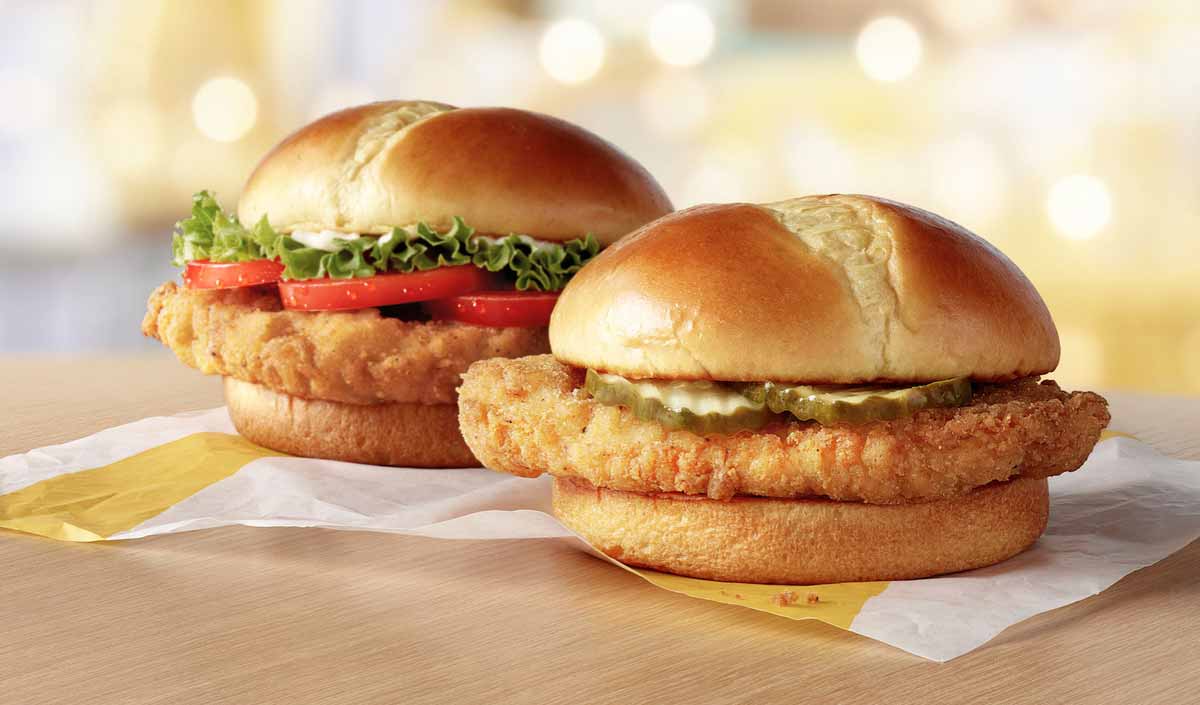If there’s one term that best describes COVID-19’s siege on the restaurant industry, it’s “uneven.” And 2021 promises to be just as strange and disjointed.
BTIG analyst Peter Saleh believes four major themes will define this coming year:
- Uneven geographic recovery
- Significant variations in unit growth across concepts
- Heightened investments in digital (more on that here and here)
- The growth of alternate restaurant formats (more on that here and here)
An example of how convoluted this is: As the first vaccines were administered in the U.S. Monday, it’s almost easy to forget we’re also less than 30 days away from the inauguration of a new president. A Democrat, in Joe Biden, is returning to office after four years of a pro-business administration under President Donald Trump. Before COVID-19, labor—namely rising wages and the ever-evolving state of regulations—represented the firmest storyline among independents and large chains alike. Naturally, it took a backseat to coronavirus. Will it jump back in? Is it there already? How will vaccines impact everything? Or will labor simply join a host of other rotating challenges? (A breakdown of what labor under a Biden administration might look like).
Regardless of where operators turn, they’ll find a shifting industry that won’t feel the same state-by-state, market-to-market and from one segment to another. If anything, that will be COVID-19’s signature and one that will be felt for years to come—the divergence of sectors, blurring of models, and shattered or accelerated trends that had no choice but to gain speed in the wake of dine-in restrictions.
From the West Coast to the Northeast
One thing about mid-March’s COVID-19 introduction is that the floor fell out across the map. Food-away-from-home spending collapsed as consumers started hoarding groceries and other essentials. Buying paper towels became a treasure hunt.
Simon-Kucher & Partners, a global strategy and marketing consulting firm, released data back in May that teased a seismic deviation. Pre-COVID-19, 67 percent of meals were consumed away from home. During the crisis, it shifted to 45 percent. The company’s survey data said after the pandemic (six to 12 months) this would slide to 37 percent home-cooked, and 63 percent away from home. While a 4 percent difference doesn’t seem massive, if you go off the National Restaurant Association’s 2020 projected figure of $898 billion sales for 2020 (before COVID-19), it’s roughly a $50 billion annual sales opportunity gone for restaurants.
Saleh said restaurants, in essentially every state, felt the brunt of pantry-stuffing behavior until May/June. Since then, large states, including Texas and Florida, reopened for indoor dining, increasing capacity along the way. However, the West Coast and Northeast oscillated between opening with limited capacity to closing entirely for in-person dining (New York City being the latest), never breaching 50 percent capacity. The result is these markets significantly lagged the national average on the pace of sales recovery.
BTIG’s graph below shows monthly Knapp-Track casual-dining results for California, Florida, and Texas. Minus June, when capacity restrictions were comparable—before a COVID-19 spike arrived—California consistently trailed the benchmark with a 14.1 percent gap in October and an average gap of 23 percent over the last four months.

Saheh believes this divergence sets up an uneven recovery for the coming year as those lagging geographies will see a outsized comeback, reversing regional dynamics of the past nine months.
We’re talking more about comparable recovery and, in particular, for those publicly traded companies that are going to bounce off the COVID-19 bottom with force. Saleh points to California-heavy Kura Sushi USA as one target. Also, Papa John’s, he said, will benefit from the regional dynamic as the concept had less exposure to the West Coast and Northeast, meaning it didn’t benefit as much in 2020 from lockdowns and reduced mobility. “This should improve the sales outlook as the year progresses and lessen the difficult sales comparisons many investors are worrying about,” Saleh said.
Again, maybe more so than any year on record, understanding a restaurant chain’s outlook in 2021 can’t just be restricted to the brand’s strength. Understanding the geography and what setbacks were in place in 2020 is going to factor in, good and bad, on a year-over-year basis.
Saleh said food-away-from-home sales should recover, too, thanks to education and hospitality as consumers begin to return to more normalized routines.
A chance for refinement
Throughout COVID-19, one relatively stable trend was the optimization of restaurant menus. While some chains used this as a potential differentiator and didn’t cut back, most did. They reduced items outside their core in an effort to improve efficiency and speed of service, with a nod to off-premises and smaller staffs. Looking ahead to 2021, Saleh said, operators have an opportunity to separate from the field with menu innovation, pivoting away from each other for the first time in decades—rather than in the same direction.
In other terms, COVID-19 might have struck the final blow for the “all things to all people,” mindset that sprung up in the 2000s as brands of all ilk tried to serve a mysterious and fast-approaching millennial generation.
Saleh expects Wendy’s to leverage its salad platform to drive sales, while McDonald’s completely abandoned the offering. The exception, however, will likely be chicken, with the chicken sandwich wars escalating in the early part of 2021 when McDonald’s launches its new Crispy Chicken option. Even with virtual chains flooding the fray by the handful, chicken has shown no real indication of eclipsing peak demand during COVID-19. Not only does the product fit off-premises and in-store targets, but it tends to be operationally simple (customers don’t get too crazy with builds and add-ons) and generally carries a healthier perception than burgers.
Where Popeyes fits in this next act and which marketing campaign emerges is hard to say, but you can’t deny the chain started a movement that will linger into 2021.
More to benefit
Another common theme, and one often tied to menu optimization, is cost cutting. Saleh said a lasting benefit of COVID-19 will be greater efficiency and higher-operating margins as restaurants reduce expenses and learn to operate with a leaner infrastructure.
Saleh predicted restaurant and food distribution operators will reach pre-COVID-19 profit levels with 90–95 percent of past sales given respective simplification and cost-saving efforts. Additionally, higher digital sales will be another enduring impact of coronavirus as ordering practices remain sticky and customers become accustomed to convenience.
Once a customer orders-ahead for pickup, with the convenience and customization possibilities, why would they go back? More likely, digital adoption of the past year will only solidify different restaurant occasions. Takeout/curbside, for instance, will serve a much more defined journey. What this could mean, especially for full-service restaurants, is an urgency with key pre-pandemic challenges—the need to separate and differentiate in-store dining so that it justifies the speed/price trade-off guests can have with fast food and delivery. Experience and service were always hallmarks of the full-service experience. Now, they’re survival terms.
Broadly, higher digital sales should provide greater operating efficiency and some welcome offsets to rising wages for restaurants, namely quick-service brands. Saleh said fast casuals like Chipotle, Shake Shack, and Starbucks will see more of a lift in 2021 than traditional quick service or casual-dining concepts. Like most things, the culprit is whitespace. You’ve seen it already with Chipotle and its digital ascension of the past two years. The opportunity was more incremental because of how much room there was to gain. Just look at the “Chipotlane” drive thru. Recent units are generating sales as much as 25 percent higher (10 percent is the average for comped units). Those restaurants welcome 60 percent of sales through digital. But vividly, the biggest change is that digital mixes two-thirds order-ahead with Chipotlanes, thus boosting profitability. Typically, the breakdown is nearly even for Chipotle between delivery and takeout, with delivery splitting 65 percent marketplace and 35 percent in-app.
In the case of Starbucks and Chipotle in particular, digital and accessibility opened the door to high-tier growth, with Starbucks saying last week it expects to open 22,000 locations in the next decade. Chipotle thinks it can get to 6,000 total.

A distributor’s take
BTIG signaled US Foods a “top pick” for 2020 based on the company’s view of the independent restaurant landscape, its exposure to other foodservice channels, profitability channels, profitability gains, and longer-term market share opportunity. But let’s focus on the independents angle.
Case-volume figures and industry sales benchmarks suggest many of US Foods’ restaurant customers are generating positive cash flow at current sales levels, according to recent earnings reports. Saleh said these sales and cash flow levels suggest independent restaurant closures will likely be in the high-single digits.
If that’s true, it would come way under some dire projections tossed about during the pandemic.
Saleh said restaurants, chain and independents, can achieve roughly breakeven profit and cash flow with 75 percent of pre-COVID-19 sales volumes. “While the pandemic took many operators by surprise earlier this year, we believe most restaurants adapted to the new off-premises environment, engaging third-party delivery providers, implementing takeout, and offering outdoor dining options,” Saleh said.
According to industry tracker Black Box Intelligence, same-store sales fell 55 percent in April, but were down just 7.5 percent in October and 10.3 percent in November (higher case numbers, more restrictions). This suggests, Saleh said, despite COVID-19’s impact, restaurant cash flows were negative for about three months in March, April, and May, before turning positive in June/July. He added the pivot to off-premises allowed industry trends to materially recover from the lows in April, and helped stave off mass restaurant closures.
Although same-store sales will surely backtrack in coming months due to winter weather and COVID-19 resurgence, coupled with lockdowns, Saleh doesn’t believe sales levels will fall below what is required to maintain positive cash flow.
For a sample, in the week ending November 29, per Black Box, comps sales were the worst experienced since mid-July, which marked three consecutive weeks where year-over-year sales growth declined compared to the previous week. But to Saleh’s point, the key there is “since mid-July.” It’s not “since mid-April.” And it’s Saleh’s thought you won’t ever hear that comparison again.
Also, quick service and fast casual achieved positive comp sales growth in that same week. Off-premises sales as a percentage of total restaurant business increased for three consecutive weeks, Black Box said, with the highest increases happening in full-service restaurants.
And on the varied recovery point, the regions with the best comp sales results were the Southeast, Florida, Texas, and the Southwest. Weather seems to now be a bigger factor in restaurant sales, especially since many restaurants have relied more on outdoor dining.
The regions with biggest declines in sales were California, New England, the Western region, and New York-New Jersey. In California, the spike in COVID-19 cases was likely the driving factor behind a steep drop in sales growth during the last two weeks, Black Box said.
This past week, UCLA economists issued a forecast that predicted the U.S. would experience “a gloomy COVID winter and an exuberant vaccine spring,” followed by stellar growth for years to come.
The forecast, which assumed mass vaccination of Americans would take place by summer, predicted annualized growth in the nation’s gross domestic product would accelerate from 1.2 percent in the current quarter to 1.8 percent in Q1 of 2021, then to 6 percent in Q2 and 3 percent growth each quarter going into 2023.
This could signal major business for restaurants trying to bridge the gap today and make to the other side. Leo Feler, a senior economic with the forecast, wrote that the vaccine and “pent-up demand” will skyrocket services consumption.
Going all the way back to April, Datassential asked consumers what the No. 1 thing they missed was. The answer: “dining at my favorite sit-down restaurant” at 41 percent.
“We believe independent restaurateurs are far more resilient and creative than investors give them credit for,” Saleh said. “While we expect an elevated level of restaurant closures this year, we believe that figure will be in the high-single digit range, far below dire forecasts of 30 percent or more closures that have circulated amid the pandemic.”
Performance Foods recently indicated in a call that it’s experiencing high-single digit closures among its customer base, with higher rates in the Northeast and West Coast. That mirrored comments from US Foods as well as Darden, which said it expected industry closures in the 5–15 percent block.
It’s impossible to know for sure how this will unfold. The National Restaurant Association recently said 110,000 locations are closed either permanently or long-term.
There’s no question federal aid—or a lack thereof—will play a role in the final picture. The Independent Restaurant Coalition Monday released a statement regarding the new framework of a $908 billion COVID-19 relief plan that contains no direct aid to independent restaurants and bars. (It does, however, have money set aside for airlines and music venues).
Meanwhile, more than one in five people unemployed from the pandemic, or 2.1 million Americans, are restaurant and bar workers. Also, the industry received less than 8 percent of Paycheck Protection Program funds in the spring as part of the CARES Act.
“Congress’ proposed $908 billion compromise bill will be a death sentence for many independent restaurants,” said Tom Colicchio, co-founder of the IRC, in a statement. “We’re one of the only industries asked by the government over and over again to close our doors, but this bill does not offers any plan to ensure we can fully reemploy our staff in the months ahead. Just 10 weeks of payroll isn’t enough to make up for 10 months of lost revenue after we’ve opened, closed, pivoted, reopened, and closed again.”
Restaurants continue to push for the bipartisan RESTAURANTS Act. It would establish a $120 billion revitialization fund where independent restaurants and bars would be eligible for grant amounts based on the difference between their revenues in 2019 and 2020. These grants could only be applied to eligible expenses including payroll, rent, supplies, PPE, and debt incurred during the pandemic.
So, in sum, there are varying schools of thought on what the next few months hold. Will they get worse and usher in mass closures, or have restaurants done enough with off-premises to keep April’s lows from every happening again?
Once more, the answer won’t be found in a straight line. It will differ by sector, scale, geography, and individual operations.
Fragmented pieces come together
The domestic foodservice distribution industry remains highly fragmented with more than 15,000 distributors despite decades of consolation, Saleh said. Sysco holds the largest market share at 16 percent, followed by US Foods at 8.5 percent, and Performance Food Group at 7.5 percent (based on pre-COVID-19 industry sales of roughly $310 billion). Yet still, the top five account for just under 40 percent of the industry, with a high concentration among the tree largest publicly traded distributors following acquisitions in the past year-and-a-half.
Sales
Sysco
- 2015: $36B
- 2017: $45.9B
- 2019: $49B
US Foods
- 2015: $23.1B
- 2017: $24.1B
- 2019: $25.9B
Performance
- 2015: $15.7B
- 2017: $17.3B
- 2019: $22.9B
Market Share
Sysco
- 2015: 13.4 percent
- 2017: 15.9 percent
- 2019: 15.8 percent
US Foods
- 2015: 8.6 percent
- 2017: 8.4 percent
- 2019: 8.4 percent
Performance
- 2015: 5.9 percent
- 2017: 6 percent
- 2019: 7.4 percent
Saleh said more consolidation should continue as industry trends normalize and the “big 3” are all in a competitive and financial position to lead this activity. US Foods’ cash balance was over $1 billion at the end of its most recent quarter, which was significantly above it needs, “and we believe the company will utilize the excess funds to re-engage in acquisitions to further strengthen its market positions.”
That’s not all that different from what might unfold with some restaurant companies that have stock-piled cash during COVID-19.
In November, consulting firm AlixPartners released an October study noting debt has more than doubled since the beginning of the Great Recession.
Debt increased between 2019 and the last 12 months 2020 by 8.1 percent for limited-service units and 15.7 percent for full-serves. The former now sits at more than four times as much debt, while full service is at nearly 50 percent more than at the start of the financial crisis.
At the same time, large publicly traded restaurant companies raised significant cash (new issuance and/or drawdown on existing credit lines) early and often during COVID-19. In some cases (like US Foods) in far excess of near- to intermediate-term cash needs. Rabobank previously said aggregator cash holdings by 25 of the largest public brands more than doubled, from $9.4 billion pre-virus to nearly $20 billion, by mid-May. Each of these chains suddenly carried more cash than before coronavirus struck.
So if dollars are up for grab with fewer units nationwide on the other side of COVID-19, larger and stronger brands will likely take an aggressive M&A stance. And plenty of concepts will be on the market.













